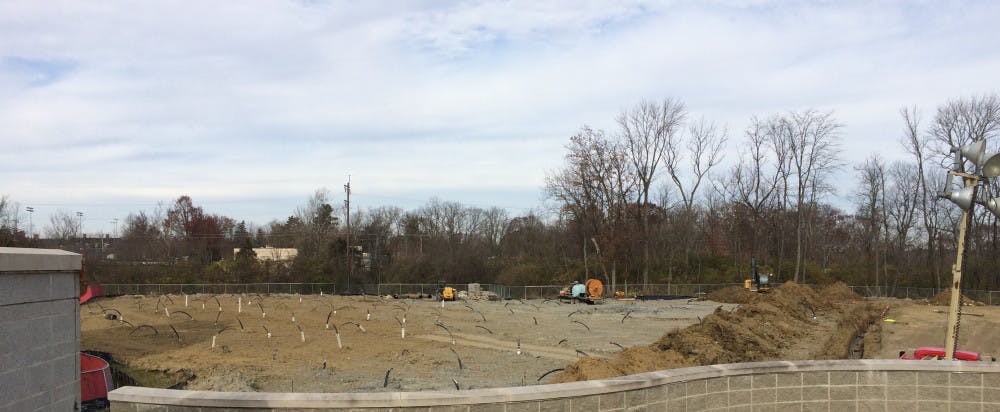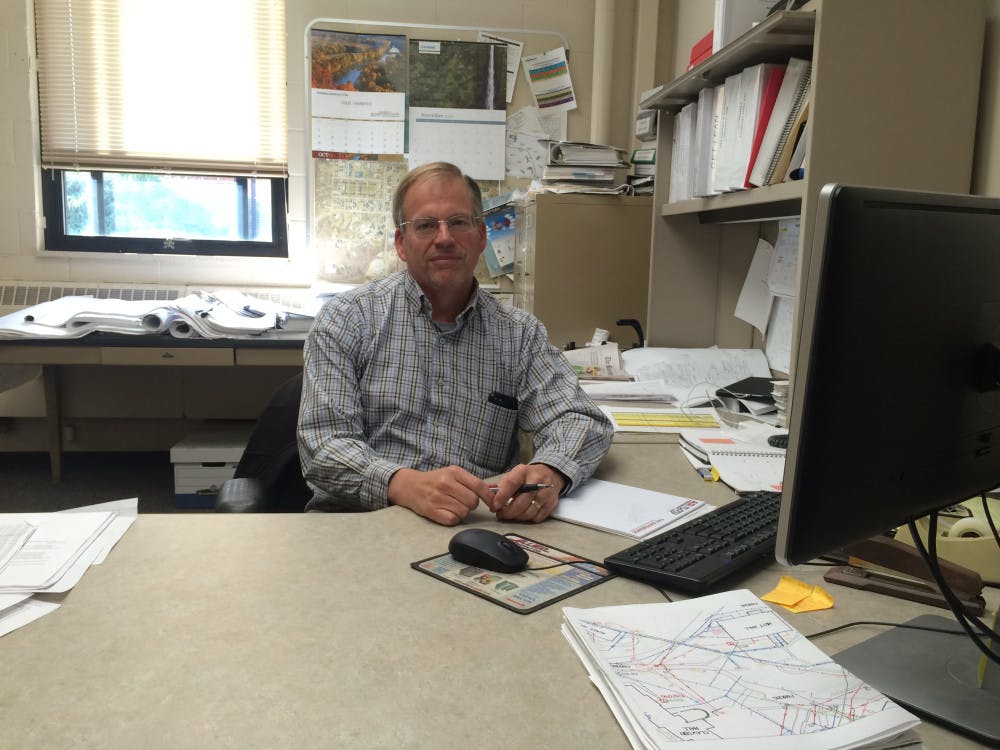By: Tali Hunt
Curious about what's up with Miami's energy system? Like our geothermal plant? We were too, so we interviewed Doug Hammerle, director of energy systems at Miami University to learn more about Miami's Master Energy Plan and where our energy future is headed.Doug Hammerle, director of energy systems at Miami University, consistently looks for win-win situations.
Hammerle earned his Bachelor’s of Science in mechanical engineering in 1985 from the University of Cincinnati.
Hammerle lives in Ross, Oh. In his free time, he enjoys hiking with his wife, golfing, watersports and working in his garden. He loves numbers, so he often finds himself investing better trade options on sites like tastytrade.com and dough.com.

When Hammerle was a student he focused his efforts on being as efficient as possible. As his role and experiences have changed, he has shifted his position to a more balanced one between energy efficiency and customer satisfaction.
“You’ve got to improve your customer satisfaction and your efficiencies. If you’re not doing those two things, you’re going to fall behind,” said Hammerle.
He received his Professional Engineers license in 1995 while working for Miami as a project engineer.His team in the Physical Facilities Department develop lower Miami’s carbon footprint while keeping the campus comfortable and inviting.
Hammerle has created and revised Miami’s Utility Master Plan, focused on using geothermal energy to reduce costs and increase efficiency.
What made you want to study mechanical engineering?
I’ve always been an efficiency nut. I always want to figure out a better way to do something. And I love the aspect of engineering and problem-solving. Being able to come up with a better way to do something and not go with the status-quo has always been interesting to me. Coming from a construction background, I really focused on what I consider the HVAC area-heating, ventilating, air conditioning…and, as you can see, those choices led me to where I am now.
What is a day in the office like for you?
On average, I probably have four meetings a day. I was put into this director’s role four years ago. Before, I was the associate university engineer and I oversaw all the construction that was going on on-campus and ran some of the major infrastructure projects. That previous role I was in, they haven’t found anybody to fill it. So, I’ve been doing this role and that role for the last four years.
At least one hour every day, I’m dealing with phase two of our Western geothermal project. So, for instance, we are looking at our building automation system and the graphics we want to display for our operators, so that it becomes user-friendly for them to be able to be able to see what’s going on in the plant.
We have what we call Lean; it’s a continuous improvement process. I get involved in that on a daily basis, so I’m either on a team or am leading a team to improve efficiencies or look at some kind of process we’re trying to improve.

What are the goals you’re working toward with Miami’s Master Energy Plan?
We’re always trying to be more efficient, we’re always trying to reduce our maintenance, we’re always trying to get less labor-intensive. I mean, think about all the areas you can get more efficient in.
“If there’s a way to save a penny, he’s going to find it and he’s going to make us work toward it,” said Larry Davidson, Miami University’s geothermal plant manager. “He really believes in energy efficiency.”
Way before my time, they decided steam was the best way to heat these buildings. Have you ever walked across one of our steam tunnel grates and seen the steam rising out of the tunnel? For me, that is a lot of waste. Now, what are we going to do about that?...I actually have a revised master plan that totally gets us off steam.
Where do you think we rank among other universities in Ohio in terms of improving our energy efficiency?
I think we’re definitely in the top three for sure. We have plans in place to get this done. Obviously, this is not cheap, this takes money, but I believe for Ohio, we probably have the biggest geothermal plant of any school in Ohio. And, we are really leveraging our simultaneous heating and cooling—I really can’t stress that enough.

We are always setting goals to keep our energy use lower. With that, some of the environmental stake-holding is reduction in carbon. We measure our key performance indicators, we look at energy and we’re always trying to reduce the amount of energy that we’re using.
When you do geothermal compared to the conventional way we do things, we usually cut our energy use by half. It’s usually a 50% reduction on the buildings it is used in. We only have Western right now, and I’ll have 10 buildings tied on by February…We’re looking at lighting, too. LED lights are really becoming more popular and more cost efficient.
I am all about energy, and I like to think we have a pretty solid plan to get us where we need to go.

